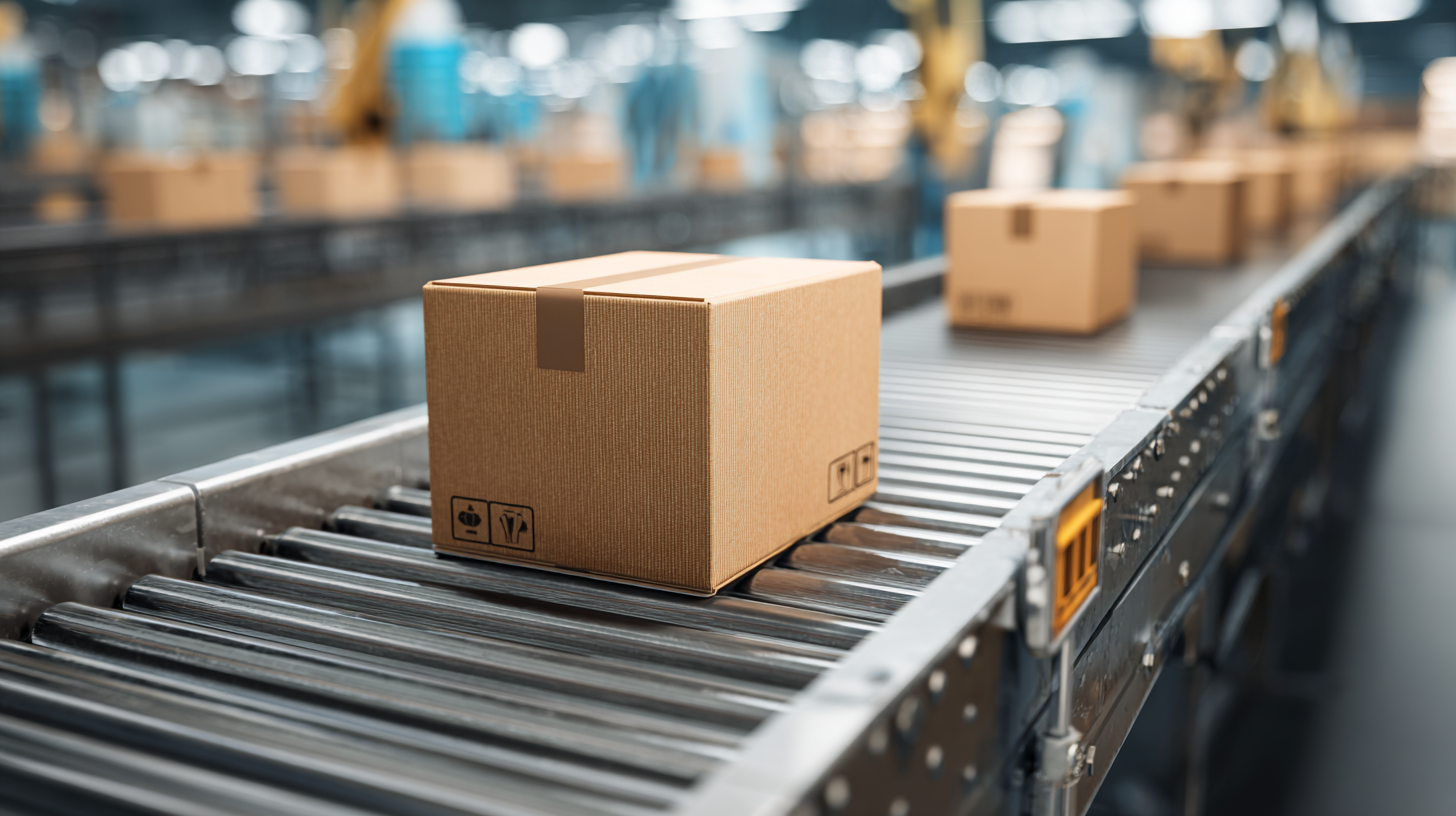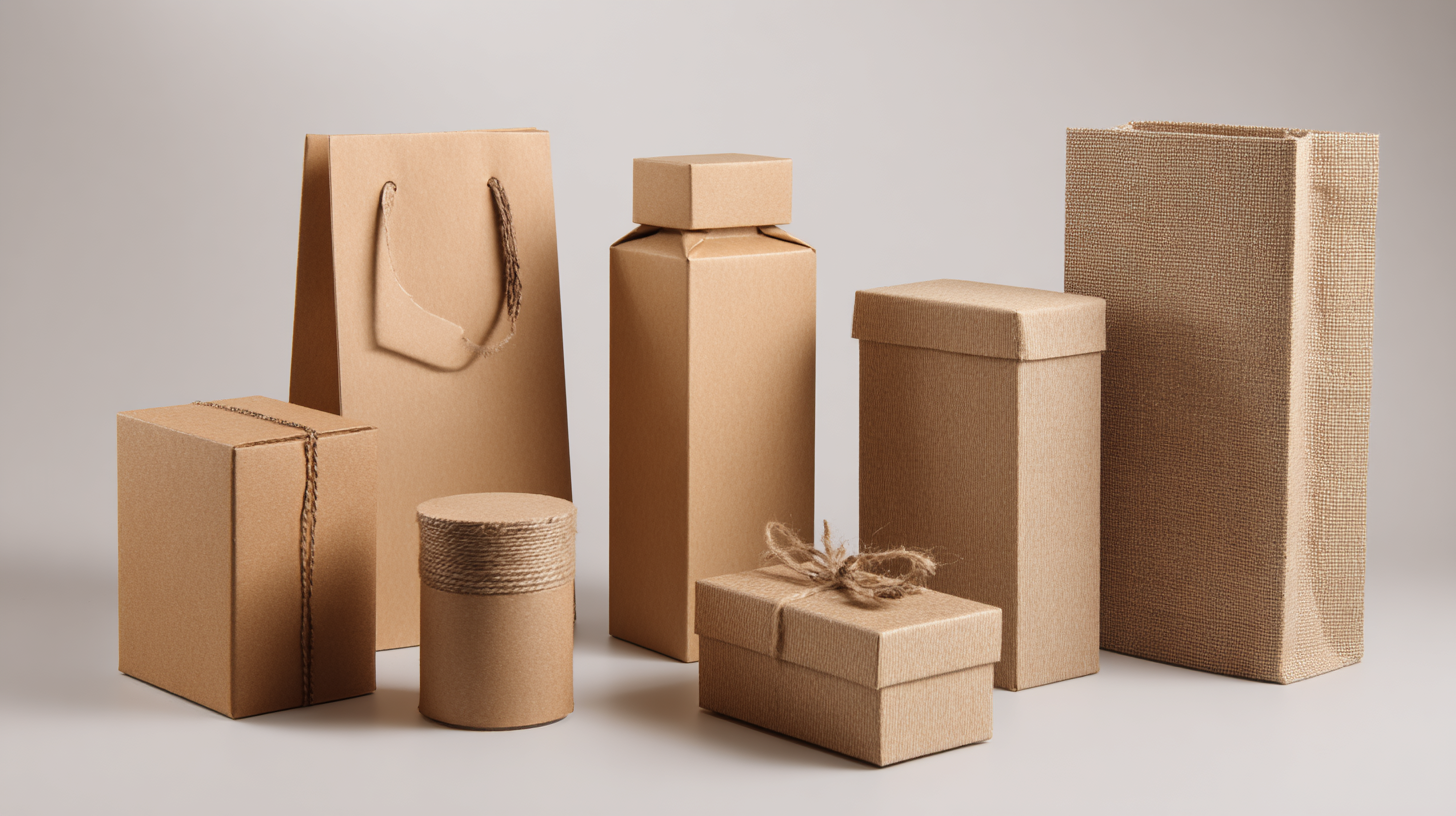The Duravant family of operating companies serve the food processing, packaging and material handling segments.
7 Innovative Top Packaging Solutions for Your Business
In today’s competitive market, the importance of effective packaging solutions cannot be overstated. According to a recent report by Smithers Pira, the global packaging market is projected to reach approximately $1 trillion by 2024, highlighting a growing demand for innovative and sustainable packaging options. Businesses are increasingly recognizing that packaging plays a critical role not only in protecting products but also in enhancing brand identity and consumer experience.

For instance, the rise of e-commerce has propelled the need for packaging solutions that ensure product safety during shipping while also appealing to environmentally conscious consumers. As businesses strive to differentiate themselves and improve their bottom line, exploring advanced packaging solutions becomes essential for success in an ever-evolving marketplace.
Exploring Smart Packaging Technologies Set to Transform Businesses by 2025
As businesses prepare for the rapidly approaching 2025, smart packaging technologies are set to redefine efficiency and sustainability in the industry. Leading the charge are innovations such as Artificial Intelligence (AI), the Internet of Things (IoT), blockchain, and robotics. According to industry forecasts, the AI market for packaging is expected to exceed $10 billion by 2025, enabling companies to streamline operations and enhance customer experiences through data-driven insights.
The integration of IoT in packaging is another transformative trend, allowing real-time tracking and monitoring of products. This technology not only improves supply chain efficiency but also supports sustainable practices by reducing waste and optimizing resource use. A report indicates that IoT-enabled packaging can reduce operational costs by up to 20%, underscoring its value in modern business strategies. Moreover, the rise of blockchain technology promises enhanced transparency and security in the packaging process, appealing to the growing consumer demand for traceability.
As the shift towards sustainability accelerates, the packaging industry is not lagging behind. Innovations in materials, including biodegradable plastics and recyclable designs, are becoming the norm. With 58% of consumers willing to pay more for sustainable packaging, businesses must adapt to meet these expectations, thereby positioning themselves favorably within the competitive landscape of 2025 and beyond.

Biodegradable Materials: How Sustainable Choices Will Change Packaging Dynamics
In recent years, the packaging industry has witnessed a transformative shift towards sustainability, driven primarily by the increasing demand for biodegradable materials. As consumers become more environmentally conscious, businesses are recognizing the imperative to adopt packaging solutions that not only meet their operational needs but also align with their customers' values. Using biodegradable materials significantly reduces the carbon footprint, as these options break down naturally over time, minimizing the harmful effects associated with traditional plastic waste.

The integration of sustainable choices in packaging dynamics is not just a trend; it is evolving into a business necessity. Companies that utilize biodegradable materials can enhance their brand image, differentiate themselves in a crowded marketplace, and ultimately build stronger customer loyalty. Moreover, innovative packaging solutions, like compostable films and plant-based containers, are emerging, offering businesses a variety of options that are both functional and eco-friendly. As the industry progresses, the embrace of biodegradable materials will pave the way for a greener future, encouraging other sectors to follow suit in their sustainability efforts.
Interactive Packaging: Engaging Customers Through Innovation and Technology
In today's competitive market, interactive packaging has emerged as an essential strategy to engage customers and enhance brand loyalty. According to a report by MarketsandMarkets, the interactive packaging market is projected to grow to USD 25 billion by 2025, reflecting a rising consumer demand for innovative and personalized experiences. Brands are now leveraging technologies such as QR codes, augmented reality (AR), and NFC to create packaging that not only protects the product but also tells a story and connects with consumers on a deeper level.
To implement interactive packaging effectively, businesses should consider integrating digital elements that invite customer interaction. For instance, brands can include AR experiences that allow consumers to visualize product usage or gain access to exclusive content. A study by Nielsen reveals that 63% of consumers appreciate packaging that provides interactive elements, indicating a clear preference for brands that incorporate technology into their packaging strategies.
**Tip:** Ensure that the interactive features are easy to access and provide value to your customers. Clear instructions on how to engage with the packaging can significantly increase participation.
Another effective approach is to personalize the packaging experience based on customer data, creating a more intimate connection with the consumer. According to a survey by Dotcom Distribution, 40% of customers are more likely to make additional purchases if they receive a personalized packaging experience. This highlights the importance of understanding customer preferences and tailoring your packaging to meet their needs.
**Tip:** Utilize analytics to gather insights on customer behavior and preferences, allowing you to design packaging that resonates with your target audience.
Automated Packaging Solutions: Boosting Efficiency and Reducing Labor Costs
In today's fast-paced business environment, the integration of automated packaging solutions has become essential for companies looking to enhance productivity while minimizing labor costs. By employing advanced machinery and robotic systems, businesses can streamline their packaging processes, allowing them to scale operations without the proportional increase in staffing. These automated solutions not only speed up production lines but also improve accuracy, reducing the risks of human error that can lead to product damage or mislabeling.
Moreover, automated packaging systems often come equipped with smart technology that provides real-time data analytics. This functionality enables businesses to monitor their packaging processes, track inventory levels, and optimize material usage. By making data-driven decisions, companies can achieve greater efficiency and significantly lower operational costs. Embracing automation not only meets the rising demands of consumers for quick and reliable delivery but also positions businesses to remain competitive in an ever-evolving market landscape.
7 Innovative Top Packaging Solutions for Your Business
| Packaging Solution | Key Features | Efficiency Boost (%) | Labor Cost Reduction (%) |
|---|---|---|---|
| Automated Box Erectors | Efficiently forms boxes, integrates with conveyor systems | 30% | 25% |
| Shrink Wrapping Machines | Provides tamper-proof packaging, reduces waste | 40% | 20% |
| Robotic Palletizers | Automates stacking, reduces product damage | 50% | 30% |
| Flexible Packaging Machines | Allows for various packaging formats, reduces materials | 35% | 15% |
| Labeling Systems | Automated label application, improves product tracking | 25% | 10% |
| Filling Machines | Accurate filling for liquids and solids, reduces spillage | 45% | 22% |
| Custom Packaging Solutions | Tailored designs for specific products, enhances branding | 20% | 18% |
Personalization in Packaging: Tailoring Designs to Enhance Customer Experience
In today's competitive market, personalization in packaging plays a crucial role in enhancing the customer experience. As consumer expectations evolve, businesses must adapt by tailoring their packaging designs to meet individual preferences. This shift not only fosters brand loyalty but also elevates the overall purchasing experience. Recent studies reveal that a staggering 85% of consumers consider personalization a key factor in gift selection, making it imperative for brands to invest in custom packaging solutions that resonate with their audience.
Moreover, the growing trend of e-commerce and the direct-to-consumer model underscores the importance of innovative packaging. As companies embrace digital transformation, leveraging data insights and generative AI in retail can provide valuable understanding into consumer behavior. Personalized packaging not only entices customers but also enhances the likelihood of repeat purchases. By creating a memorable unboxing experience, brands can effectively differentiate themselves in an increasingly crowded marketplace, thus driving both customer satisfaction and revenue growth.











